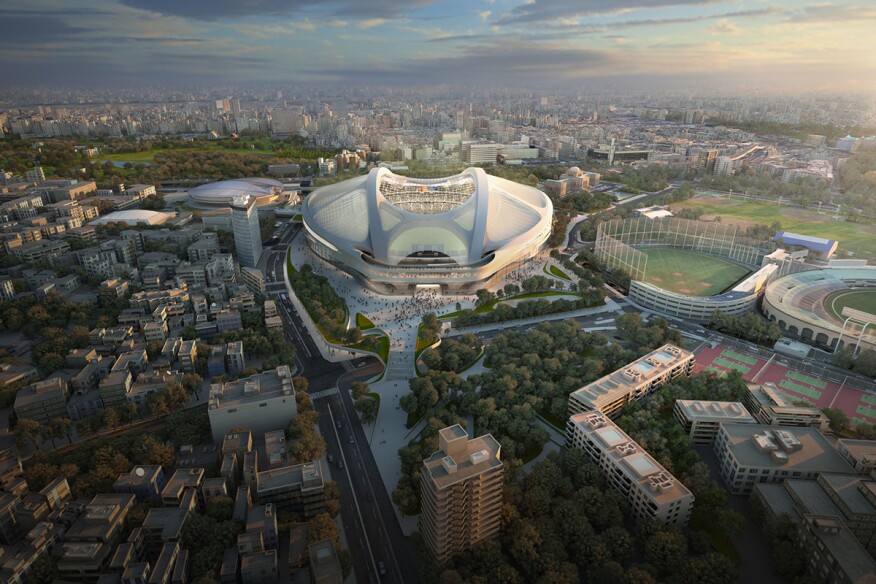
Today, the Japan Sport Council (JSC), an organization overseen by the Japanese government, unveiled two new designs for the stadium that will be used in the 2019 Rugby World Cup and the Tokyo 2020 Olympic Games. JSC refers to the designs as “A” and “B” and did not identify the firms that developed them. The organization will announce the winning proposal this month to replace the design produced by London-based firm Zaha Hadid Architects (ZHA).

Although ZHA originally won the stadium commission through an international competition in 2012, JSC cancelled the firm's plans in July, due to rising construction costs and environmental concerns expressed by the public, and started anew in its search for an architect. ZHA unsuccessfully pushed back on those criticisms, arguing that its design could be modified for cost savings and that a faulty contractor procurement process had plagued the project. "Work would already be underway building the new National Stadium for Japan if the refinements proposed by ZHA and our Japanese design partners over the previous years had been made to the original competition winning design. The adapted design would have met all the requirements of the new brief and delivered an efficient, high-quality new National Stadium for the 2019 Rugby World Cup, in good time to welcome the world to Tokyo for the 2020 Olympic Games, and go on to become a new home for sport in Japan for many generations to come.

In contrast to ZHA's futuristic design, which some likened to a bicycling helmet, the proposed designs now under consideration are more understated. Design "A'' is a steel and wood structure with a flat roof, and stands only 50 meters (164 feet) tall. Meanwhile, the 54.3-meter-tall (178 feet) Design "B'' features outer glass walls and 72 wooden pillars forming its oval shape. Both projects are expected to cost about 153 billion yen ($1.26 billion) and will be completed, apart from landscaping and surrounding site work, by Nov. 30, 2019.
"It is disappointing that the government did not even consider working with the existing design team to build on the two years of design work in which they and the Japanese people had invested, including the detailed configuration and seating bowl design for this complex site in Tokyo," a ZHA spokesperson said in an emailed press release. "There are now serious risks of a rushed process, with no certainty on the likely construction cost of the stadium, and that it may not be ready in time or deliver a significant sporting legacy without expensive conversion after the 2020 Games."


The arena will replace the demolished National Stadium, which was built in the 1950s and hosted the 1964 Tokyo Olympic Games.
Note: This article has been updated to include a comment from ZHA.
















